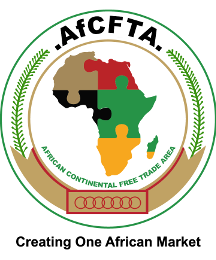
East Africa takes full advantage of AfCFTA — Report: Lesson for Ghana, others to up their game
With the implementation of the African Continental Free Trade Agreement (AfCFTA) yet to be fully exploited by many countries, the World Bank, however, is projecting that East Africa is set to benefit more from the intra-African trade policy.
Advertisement
More than three years after the launch of the trade policy, experts have decried the lack of enthusiasm by countries in Africa to take full advantage of the $4 trillion trade opportunities.
For instance, reports indicate that only eight out of 44-member states have submitted their tariff guidelines, a pre-requisite for the take-off of the trade agreement, which is expected to create a market size of about 1.4 billion people.
The move by the East Africa countries could, therefore, be seen as a bold step towards leveraging the opportunity that AfCFTA offers member states.
Many other African blocs, including ECOWAS, have not demonstrated the same commitment towards submitting their tariff guidelines, which will pave the way to deepen trading across borders.
The World Bank in its report on East Africa, revealed that AfCFTA had been well-designed to strengthen the economies of the region, adding that it would be accomplished, among other things, by lowering trade expenses related to trade facilitation, as well as decreasing the costs of non-tariff policies and non-tariff obstacles.
The report quoted the executive director of the East African Business Council (EABC), John Bosco Kalisa, as saying that the implementation of AfCFTA’s policies was sure to boost the East African economy.
“The continental trade protocol is projected to increase real income for East Africans,” he said.
The report said for the East African Community (EAC) group, swift implementation of the continental trade agreement would be advantageous.
Impact
Real income is anticipated to rise by 10 per cent in Tanzania, the second-largest economy in the area, between 2021 and 2035.
Real income is expected to rise by 11.8 per cent, 3.8 per cent, and 3.6 per cent in Kenya, Uganda, and Rwanda.
Tanzania and Kenya's intra-AfCFTA export shares would increase as their total world exports are projected to rise by 28 per cent and 43 per cent respectively, for the EAC.
Uganda and Rwanda are expected to have similar projections of 29 per cent and 33 per cent, r.
The AfCFTA agreement, according to Mucai Kunyiha, director of the EABC board, was a manifest demonstration of the African nation's commitment to the new system.
“They have shown commitment to doing more trade and investments among themselves,” Mucai Kunyiha said.
The AfCFTA agreement aims to increase intra-African commerce by gradually removing tariffs on more than 90 African items.
The elimination of non-tariff barriers and trade restrictions on products and services are also a part of the goal. The EAC's goods exports to Africa were $7.9 billion, or 42 per cent of the overall EAC goods exports to the globe ($18.7 billion).
It is, therefore, expected that blocs such as ECOWAS would also up their game to leverage the opportunities under the agreement.
Experts believe that a major hindrance of the trade policy is the failure of many countries on the continent to submit their tariff schedule, a major requirement to facilitate trade across countries.
Although some four Ghanaian companies have taken advantage of it to export to Cameroon and Egypt since the exercise started , there is still a lot more room for improvement.




